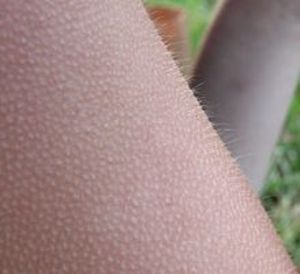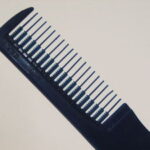Why do we get goosebumps (or goose flesh)? Don’t worry about finding out the answer it won’t give you gooosebumps. First, let’s look at how the body makes goosebumps. The process to make goosebumps starts in the sympathetic nervous system (which we can’t consciously control).
The sympathetic nervous system picks up on things we may not be consciously aware of, such as a slow drop in surrounding temperature. The sympathetic nervous system tells the skin to flex its arrectores pilorum muscles, located at the base of each hair follicle. This action is tantalizingly known as “piloerection.”
The resulting small raised bumps does make human skin somewhat resemble the skin of a plucked goose or other poultry. Why goose flesh was selected for this descriptive honour is unknown. Perhaps it sounded better than “chicken bumps” or “duck bumps”. Or, perhaps the sudden raucous honking of a goose gave our ancestors goosebumps. Whether or not you like the honking of geese, you will most likely get goose bumps because of the following reasons.
Cold
This is the most common reason goosebumps appear. This can be from a sudden chill or prolonged exposure. Eating cold food on a really hot day can give you goosebumps (as well as brain freeze.) People concentrating about what it’s like to be cold can even get goosebumps to form on their skin. Although it’s commonly said that goosebumps help warm up the skin by making it more difficult for heat to escape, they really do not contribute that much to keeping you warm.
Fever
People with a high fever will often sweat, shiver and have goosebumps even though they are under blankets in a warm room. It’s thought the sweat makes the goosebumps form. The sweat is the body’s desperate attempt to try and cool itself down. Anyone with a fever like this needs a doctor as soon as possible.
Fear And Excitement
There is a good reason why one of the most popular lines of children’s scary books is entitled Goosebumps. A surge of adrenalin can trigger the sympathetic nervous system, causing goosebumps to form, despite whatever the surrounding temperature is. We can also experience goosebumps during a thrilling event like watching fireworks, riding a roller coaster or making love.
Evolution In Action?
If goosebumps don’t really keep get you any warmer when you are cold, then why do we bother having them? Also, why do we have them when we are frightened or thrilled rather than just having them when we are cold? Some theories suggest that goosebumps may be proof that smooth-skinned humans evolved from much hairier humans. When apes, dogs or other animals are scared, their fur bristles, making them look much bigger. Perhaps goosebumps are the remains of a similar bristling action.
References:
MedicineNet.com. “Goose Bumps.” http://www.medicinenet.com/script/main/art.asp?articlekey=6842
Discovery Health. “Chills.” http://healthguide.howstuffworks.com/chills-dictionary.htm
University of California, Irvine. “Body Quirks: Goose Bumps, Laughter and Butterflies.” http://www.uci.edu/features/2009/09/feature_bodyquirks_090914.php








